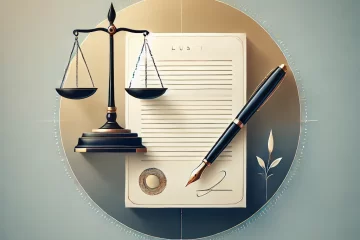![]()
Introduction
Advocates are not only professionals but also court officers who play an important role in the administration of justice. As a result, the set of rules that govern their professional conduct stems from the duty they owe the court, the client, their adversaries, and other advocates. Every profession has a dress code, and people who belong to that profession can be identified by their attire. Lawyers’ dress code is a symbol of confidence, discipline, and professionalism. In India, a lawyer’s dress code is governed by the Bar Council of India Rules, which require all lawyers to wear a black robe or coat with a white shirt and a white neckband in accordance with the Advocates Act, 1961. Take a look at how the legal dress code has changed over the years.
In comparison to other professions, lawyers’ dress code is considered to be the most elegant. Judicial Robes are worn by Judges and Advocates as a sign of respect and loyalty to the court and the Justice. Because the judicial system is regarded as one of the most respected, it is critical to dress appropriately in the courtroom to demonstrate respect for the system and the people involved. A lawyer’s uniform in some countries, such as Canada, is a red and white dress. A lawyer in Europe wears a traditional black wicked jacket over his or her dress.
The History of Evolution of the Legal Dress Code
The formal black and white dress worn by lawyers has a history that isn’t quite as black and white as the dress itself. The evolution of the legal profession’s dress code can be traced back to the Middle Ages, when lawyers, also known as barristers, solicitors, advocates, or councillors, dressed similarly to judges. In Great Britain, barristers wore gowns with stuffed shoulders and glove sleeves that reached elbow length.
According to the rules of the Inns of Court, which organise barrister education and membership, these gowns were mostly black in colour. Coifs, skullcaps, and neck bands were also worn by the barristers. Nonetheless, barristers who were not allowed to present their cases in front of the courts wore long, open black gowns with winged sleeves. Solicitors, on the other hand, were not required to follow a strict dress code in the seventeenth century and were free to wear regular business suits.
The Colourful Seventeenth Century
Countries decided on the dress code for legal professionals in the seventeenth century based on their tastes and preferences. The colour, fabric, and length of the dresses and gowns of judges, lawyers, and clerks were determined by a Royal mandate in 1602, which specified the colour, fabric, and length of the dresses and gowns of judges, lawyers, and clerks. Seasons and days of the week were assigned specific colours. In the United Kingdom, the Decree of Westminster of 1635 empowered the monarch to determine the legal profession’s dress code.
Judges were required to wear a taffeta lined black or violet silk gown with cuffs made of silk or fur, a matching hood, and a mantle from spring to autumn, depending on the season. During the winter, the taffeta lining was replaced with a miniver to keep the judges warm. The judicial dress code of Britain’s American colonies was also regulated at the time, but the dress code of legal professionals in America was comparatively less complex than the British dress code.
The Wig System
The British bar and bench introduced the wig, which gave legal professionals major fashion goals. In 1660, Charles II imported the first wigs. These wigs were mostly made of human or horsehair and were mostly worn by the upper crust of society in the United Kingdom. However, by the middle of the eighteenth century, wigs had fallen out of favour with the general public and were only worn by legal professionals as a necessary part of their attire.
The wig has been phased out of the judicial dress code over time, but even in the twenty-first century, High-Court judges and the Queen’s Counsel in the United Kingdom and the Commonwealth still wear full-bottomed wigs for ceremonial occasions, and shorter bench wigs are the norm for daily courtroom proceedings. In the United Kingdom, barristers wear a tie wig that is worn above the hairline, exposing the forehead.
The Black and White 21st Century
The 21st-century judicial dress code has undergone significant changes, not only in terms of style but also in terms of the authority that regulates it. In the United Kingdom, judges, barristers, and clerks must wear a black silk gown over their suits, a tie wig, and a band around their necks when attending court. The wearing of a wig is optional for solicitors and lower court officials. In contrast to the monarchs of the seventeenth century, the High Court, District Courts, and Circuit Courts now have jurisdiction over judicial dress codes.
Judges wear a variety of colored mantles that change depending on the type of case and season. Various colours were used for judicial dress until the seventeenth century; however, black became the traditional colour for judicial dress later. Black is the judicial colour of dress in France, and it is said that in 1684, Britain adopted the colour black for its barristers and judges.
Other European countries have a similar dress code in which judges wear scarlet or royal blue judicial robes, though this is dictated by tradition rather than written law. Lawyers and advocates who appear before the European Courts of Justice dress in their national legal costume, whether it’s a robe or a plain dress.
Levels of the judiciary in the United States of America wear long, black cloth or silk gowns with bell-sleeves and yoked necklines. Although male judges are expected to wear a shirt and tie underneath their robes, they do not wear a wig, special headdress, or collar.
The Regulations of the Bar Council of India Regarding Dress Code: The Advocates Act 1961
As we all know, the British have had a significant influence on the Indian legal system. As a result, the Advocates Act of 1961 requires all lawyers to wear a black coat or robe over a white shirt with a neckband. The Advocates Act 1961, Section 49(1)(gg), establishes the following dress code for senior and other advocates:
Chapter IV
Form of Dresses or Robes to be Worn by Advocates
The dress code for Advocates appearing in the Supreme Court, High Court, subordinate courts, tribunals, or authorities is governed by Section 49 of the above Rules. They must wear the following items as part of their sober and dignified attire.
I. Dress Code for Advocates in India
Part VI: Rules of the Bar Council of India/Rules under Section 49(1)(gg) of the Advocates Act, 1961 (Chapter IV). “The form of dresses or robes to be worn by Advocates appearing before any court or tribunal, having regard to the climatic conditions,” it says.
1 coat – With advocates’ gowns, (a) a black buttoned-up coat, chapkan, achkan, black sherwani, and white bands, or (b) a black open breast coat, stiff or soft white collar, and white bands.
Long trousers (white, black, striped, or grey) or dhoti (excluding jeans) in either case:
2- Black tie
A black-tie may be worn instead of bands in courts other than the Supreme Court, High Courts, District Courts, Session Courts, or City Civil Courts.
II. Lady advocates:
Black full-sleeved jacket or blouse, stiff or soft white collar with white bands, and Advocates gowns. With a black open-breasted coat and a white blouse, with or without a collar, white bands, and white bands.
Alternatively, sarees or long skirts (white, black, or any mellow or subdued colour without any print or design) or flares (white, black, black-striped, or grey) or Punjabi Dress Churidar-Kurta or Salwar-Kurta with or without dupatta (white or black) or traditional dress with black coat and bands.
III. Provided that, except when appearing in the Supreme Court or a High Court, the wearing of an advocate’s gown is optional.
IV. Provided further that a black-tie may be worn instead of bands in courts other than the Supreme Court, High Court, District Court, Sessions Court, or City Civil Court.”
Despite the fact that the Advocates Act does not specify a different gown for Senior Advocates, they have been seen wearing one that is distinct from the gown worn by all other advocates. They wore Queen’s Counsel gowns, which have a different pattern than the ordinary advocate gowns.
Judges must follow the same dress code as Senior Advocates. Male Judges typically wear white shirts and trousers with a white neckband, a black coat, and a gown, whereas female Judges typically wear the traditional sari with a white neck band, a black coat, and a gown. According to the rules, an advocate may not wear bands or gowns in public places other than in Courts, except on ceremonial occasions and at such locations as the Bar Council of India or the Court may prescribe.
During the COVID-19 outbreak, when courts are required to use the Video Conferencing system to function, it has resulted in a change in the dress code for lawyers appearing in court. The Supreme Court of India has instructed lawyers to wear a “plain white shirt, salwar-kameez, or saree, with a plain white neckband” during virtual court hearings. Following in the footsteps of the Supreme Court, High Courts across the country have announced a new dress code for lawyers appearing in virtual court. The system will remain in place until “medical exigencies exist or until further orders,” according to the statement.
Conclusion
The ‘Dress Code’ expresses the sanctity and commitment of lawyers to judicial institutions while also emphasising their professional responsibility. The ‘Dress Code’ isn’t just a status symbol; it also helps Lawyers maintain discipline and gives them the strength and confidence to fight for justice. It also gives lawyers a distinct personality that distinguishes them from other professionals.
In a courtroom, it is critical to dress appropriately. Because the judicial system is regarded as one of the most respected, it is necessary to show respect for it and the people who work in it. Judges in the courtroom have the authority to deny a lawyer’s request for the audience if he is dressed inappropriately. This is why not only lawyers, but everyone who works in the courtroom should adhere to a strict ‘Dress Code,’ with the basic rule being to dress conservatively. In the courtroom, wearing shabby or casual clothing is considered disrespectful to the law.
The law has a lot to do with how you look. The ability to gain the trust of the client, the Judges and the Jury is essential. It is rightly said that the first impression is not the last, but rather the lasting impression, so it is critical that a lawyer’s professional attire allows him or her to gain the trust and faith of the client, the Judges and fellow lawyers, the jury, and the general public. The code of ethics of this profession is said to have been violated by an advocate who does not work with sincerity and does not follow the rules of conduct.
The fundamental goal of legal ethics is to maintain the legal profession’s honour and dignity, to foster a spirit of friendly cooperation, to ensure the counsel’s honourable and fair dealings with his clients, and to secure the lawyers’ societal responsibilities. The appearance of a lawyer in court or during a video conference is not “much ado about nothing.” It has its own majesty, solemnity, splendour, and grandeur, lending the wearer a distinct personality.



0 Comments